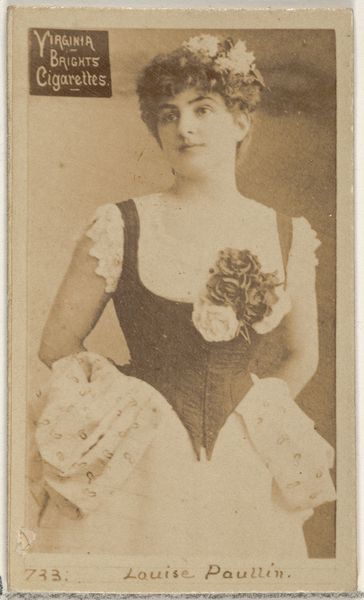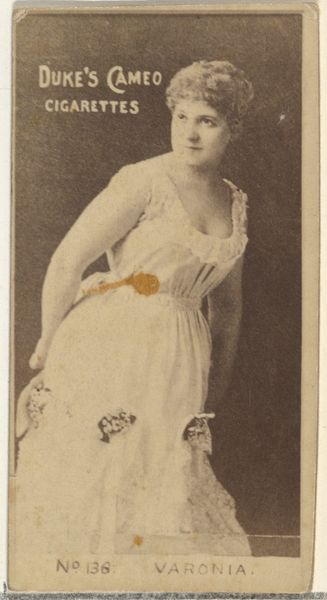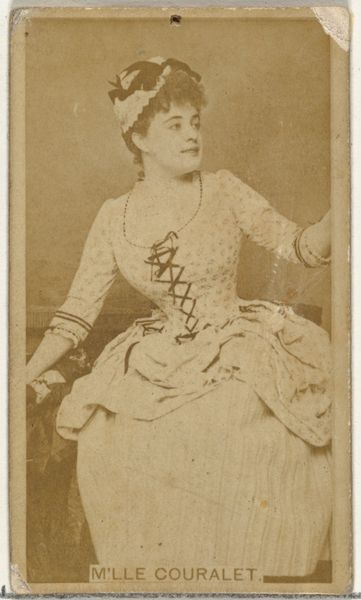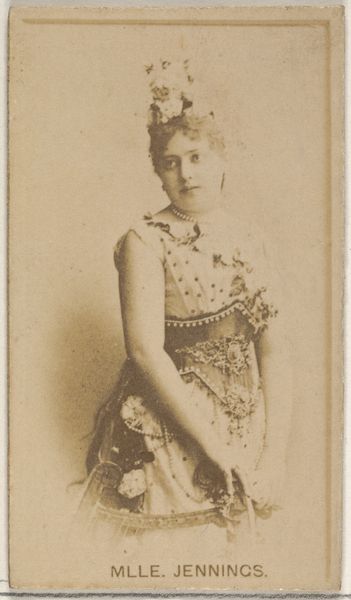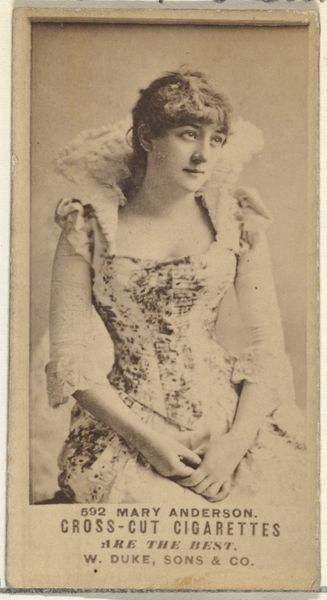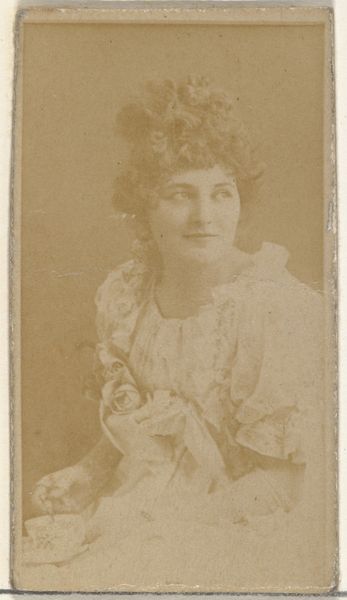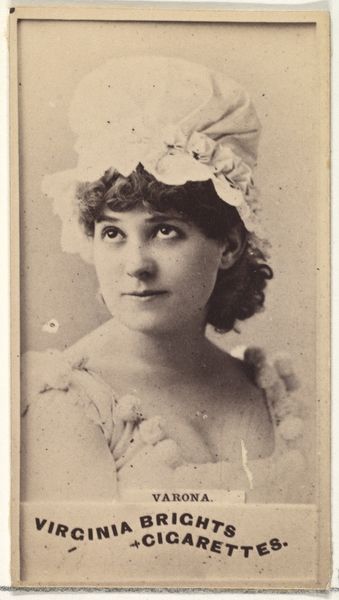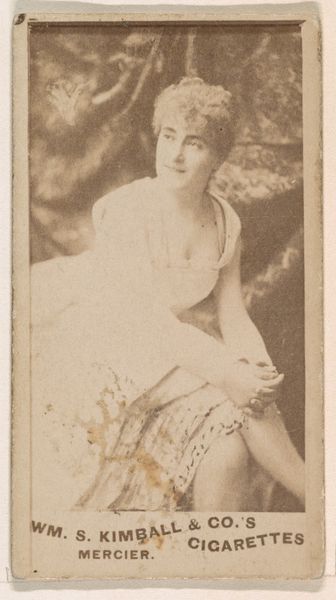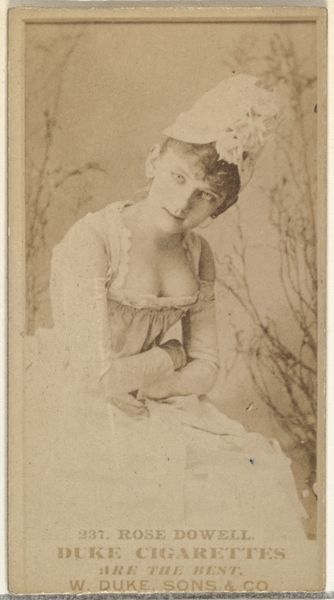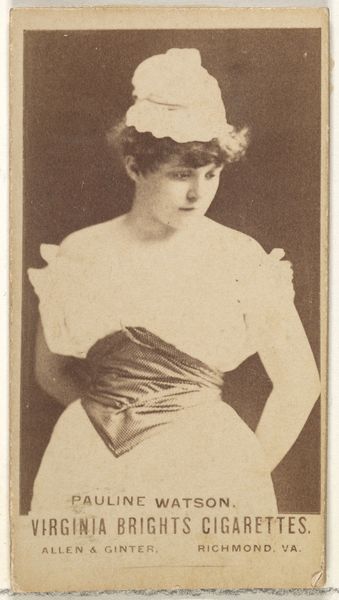
Card Number 591, Varonia, from the Actors and Actresses series (N145-7) issued by Duke Sons & Co. to promote Duke Cigarettes 1880s
0:00
0:00
drawing, print, photography, albumen-print
#
portrait
#
african-art
#
drawing
#
photo restoration
# print
#
photography
#
historical photography
#
albumen-print
Dimensions: Sheet: 2 11/16 × 1 3/8 in. (6.8 × 3.5 cm)
Copyright: Public Domain
Curator: This is card number 591 from the "Actors and Actresses" series, an albumen print created in the 1880s by W. Duke, Sons & Co. to promote Duke Cigarettes. The subject is Varonia, whose identity beyond this image remains, unfortunately, unknown to us. Editor: There’s something wistful in her gaze, a quietness that's magnified by the limited tonal range of the print. It's an intimate portrait, despite the fact that it was mass-produced for advertising purposes. Curator: Cigarette cards such as this one often provided consumers with miniature windows into the popular culture of the time, offering glimpses of stage stars, athletes, and other public figures. It’s a fascinating blend of marketing and cultural representation. Think of them as late-Victorian trading cards, collectible mementos offering insights into an era's values and fascinations. Editor: Looking closely at Varonia’s pose, I notice how she is slightly off-center, and the gentle curve of her arm seems to guide the viewer’s eye through the composition. The details in the lace and her softly styled hair demonstrate a mastery of capturing texture within a limited tonal palette. Even the stark, blocky text at the bottom is boldly positioned. Curator: Yes, that very placement contributes to its semiotic reading. Cigarette cards like this reflected and also helped cultivate aspirational ideals of beauty and status. The pairing of Varonia, likely a well-known stage performer of the era, with Duke Cigarettes subtly aligned the brand with sophistication, artistry, and even glamour. In other words, the image spoke to consumers—associating the purchase with social ascent. Editor: The card's format, while standardized for commercial reasons, ironically echoes formal portraiture of the period. In a way, the act of collecting and admiring these cards granted ordinary people access to these icons of celebrity and, in so doing, brought an immediacy and tangible connection to these figures in a way unprecedented by past standards. Curator: Indeed, these artifacts function as symbolic bridges, connecting us to past dreams, consumer desires, and the visual languages of an era hungry for images. The mass dissemination of faces and fashions marked the early stages of visual culture and an image-based economy—and a significant shift that shapes our perception even now. Editor: Exactly. It's a reminder that even the smallest, seemingly most mundane objects can be powerful communicators of their time.
Comments
No comments
Be the first to comment and join the conversation on the ultimate creative platform.

